Seriously, pay attention and don’t eff this up.*
You know those times when you pop open a news app on your phone? And what you read strikes fear in your heart? That was me this week. And last week if I’m being honest.
As a Courageous Leadership speaker, I try to keep up with what corporate executives are saying to the media. I know, stop laughing. Hey, sometimes you learn something! At the moment, I’m monitoring the drama around RTO plans.
And I have to say, this whole returning to the office thing has taken some interesting twists and turns. First, we saw the big dogs barking orders, insisting that we get back under their watchful eyes, pronto. A lot of it was probably posturing. What leader doesn’t want to appear decisive and in control?
The latest trend is to quote "polls" or "surveys."
Citing surveys instead of leaders keeps the bigwigs’ names out of the headlines. Clever they are. But the scolding and shaming continues. One article called out “young resisters.” As though we didn’t already have enough derogatory labels for the newest members of our workforce. Many discussed attempted bribes of yoga, cash, beehives, garden plots, and ice cream.
Wait. Beehives?
On the upside, there was also a piece on the best “men’s bags for the back-to-work season.” And women’s fashion is finding its in-office happy place in “contemporary suiting.” Looks like a suit, feels like sweatpants. (Where were these in the 80s?)
Here's the thing. (I always have a thing. SMH.)
*Spending all of your energy trying to appear decisive and in control is short-term thinking that will come back to haunt you. Which might get you in the mood for Halloween, but studies show that humorous costumes far outperform the scary ones. Anyway, my point is, using your precious leadership energy to develop a flexible, long-term, big picture mode of operation will win you far more accolades and admiration in the long run.
4 Steps to the Perfect Return-to-Office Plan
Before you read this, do me a favor and clear your figurative desk. By that I mean throw out words like mandatory, required, uniform, company policy. Imagine they don’t exist. Open your mind. Okay, ready? Here we go.
Reconnect with your core customers
We’re all so wrapped up in the stream of people resigning from our workforces that we’ve taken our eyes off the customers—the very people we’re in business to serve. So the first step is to look away from the mayhem and refocus on our core. (Extra points if you just sucked in your gut when I said that.)
But seriously, we need to consider the kind of return-to-office plan that would best meet the needs of our customers. External customers. And internal customers too—other divisions, departments, partners, suppliers. A word of caution here: it’s easy to impulsively use customer needs to argue that people should get back at their work stations stat. Don’t do that. Really think about who your core customers are, and what they want and need.
Publicly admit there's no one right answer
Get comfortable with an approach to your business that involves constantly testing, tweaking, honing. The one size fits all declaration is not going to work. Rather than maniacally focusing on the destination, we have to think of “return to the office” as a journey.
Work isn’t 100% in-office or remote anymore. It’s more like a software program. You have to put the beta out there and then constantly measure it, read the data, and update it.
When you put a new application on your computer, you never think, “There you go. It’s perfect. This is never ever going to change.” So don’t set that expectation with your people. It’s going to be constant iterations that refine and hone and perfect your organization’s workstyle. As people migrate in and out of your workforce, your modus operandi is going to keep evolving too.
Get back in touch with your team members
Every time you try something different, ask, “What’s working? How could we improve this?” The best, most courageous leaders in the world are part of their teams and not separate from or lording over them.
So we need to swallow our pride and get into the thick of things. We need to get comfortable being vulnerable. We need to find out what our team members really think and feel about company policies. And we need to share with them what is working for us as leaders too.
How do we do that? We start with trust. Remember, people have been working remotely very successfully for 18 months. And trust goes both ways. Instead of waiting for people to “earn your trust,” you go first. Be the first one to demonstrate trust. Be the first to trust them and watch them respond in kind.
We need to stop dreaming about a world that doesn’t exist anymore. We have to go into these decisions understanding that, for the most part, people have been very, very, very successful working remotely. Something like 98 percent of people are working harder, delivering better results, than they did when they worked in an office environment.
Workers have proven that to do the work that you’re paying them to do – to be productive and successful – they don’t necessarily need a lot of oversight or face-to-face interaction.
Embrace flexible and creative solutions
Okay, for number crunchers and goals quantifiers, this is going to be a tough one. But honestly, looking for a coldly efficient, cookie cutter, one-and-done office work policy will drive you mad. And not the Beautiful Mind kind of mad. More like a balloon that’s pffffsssssting its precious helium all over the room kind of mad.
What does flexible and creative even mean? In this case, it means acknowledging that – as much as we looove to tuck people into neat, orderly categories – we’re all different. The one thing we have in common is our interest in and eagerness to do the work we do.
Other than our common work link, our personal circumstances vary widely. And different people thrive in different work environments.
You could have five top performers and they might all have different needs. And remember all those front line workers who never worked from home. Some people have multiple generations in their households. Some are still homeschooling our future workers. Some are getting their degrees. Some work best in complete solitude. Some need to bounce off of others to get in their groove
Yes, leadership requires more courage now than it ever has before. That’s because we’re not barking orders from on high any longer. Modern working protocols require more vulnerability and stronger people skills—that magical touch that enables you as a leader to create working conditions conducive to any number of different personal circumstances.
If that sounds onerous and unfair, it’s not. It’s precisely because we embrace a wider and more diverse range of employee circumstances that we are able to produce products and services that serve a broader range of customers. Think about that for a minute.

Thanks for reading! KARMA POINTS: Take a minute right now to share this article with someone who needs to read it.
At the Courageous Leadership Institute, we leverage our work with over 300,000 leaders and employees from 400+ companies to offer leadership programs that impact results with customers and employees immediately.
Cindy Solomon is CEO of the Courageous Leadership Institute, a thriving global leadership training and research organization with access to up-to-the-minute insights on how today’s most innovative corporations are defining the future of business. She is also the author of two books, The Rules of Woo and The Courage Challenge Workbook.









